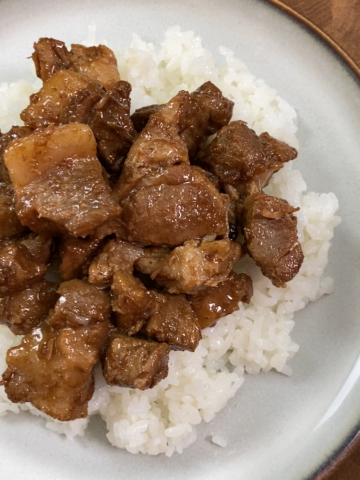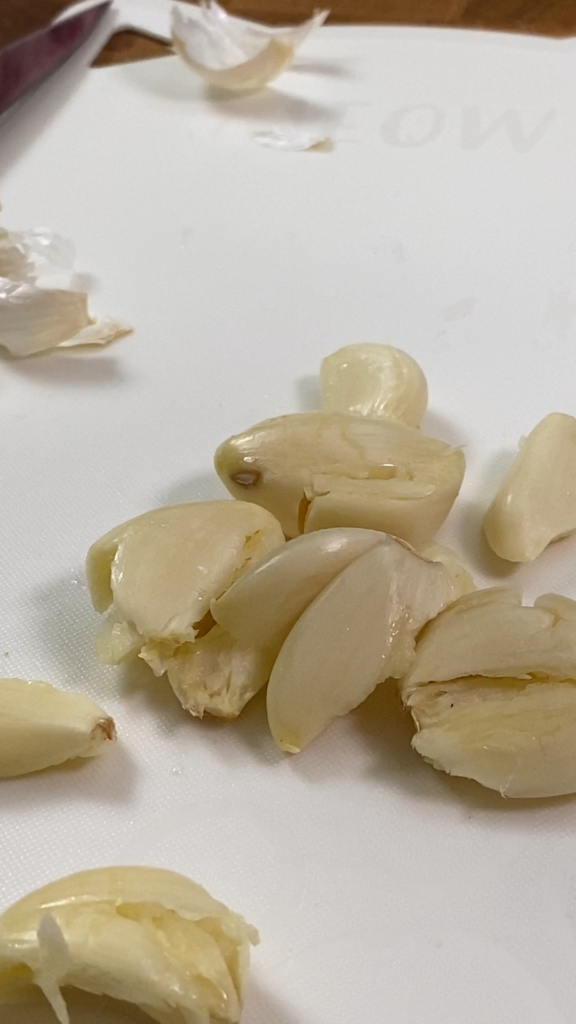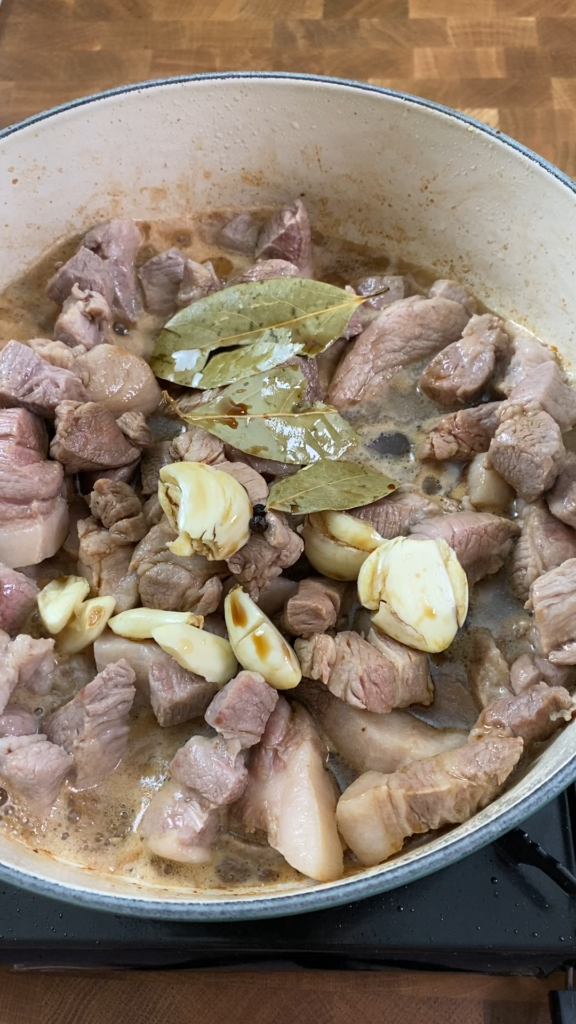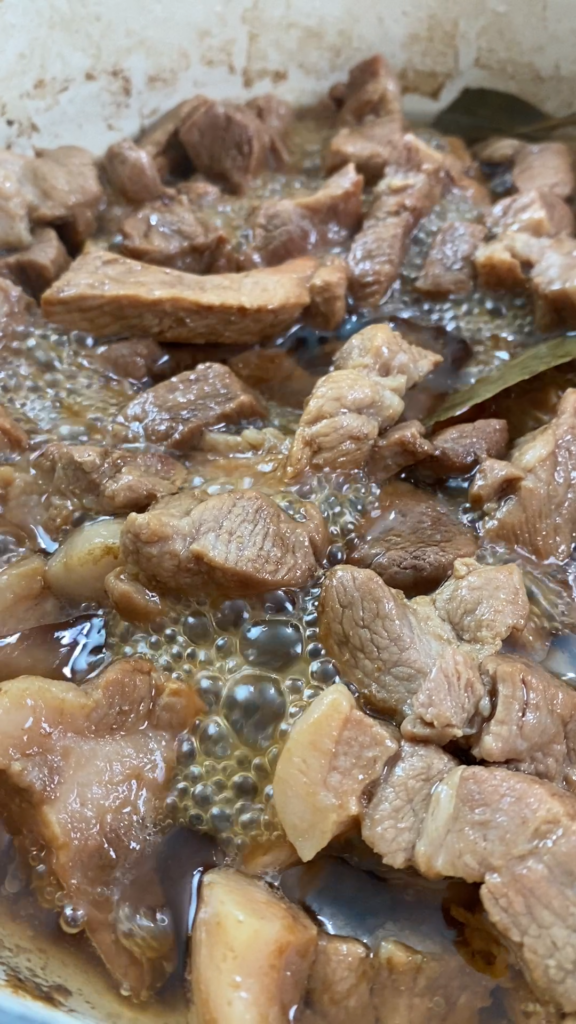While there are many Filipino Pork Adobo recipes out there, I believe my recipe is worth sharing. I have a few tips on how I get pork adobo to taste the way I like to.
Growing up in the Philippines, my parents would make adobo for dinner so often at one point I got sick of it. However, after leaving home for college, I ended up longing for it.
As you might have learned from my video, this recipe is handed down by my dad. In college, I tried to make it from instinct but when it came out a little lacking, I called my dad and he said to add more vinegar, not soy sauce. Over the years I’ve not adjusted the recipe much at all but rather dialed it in.
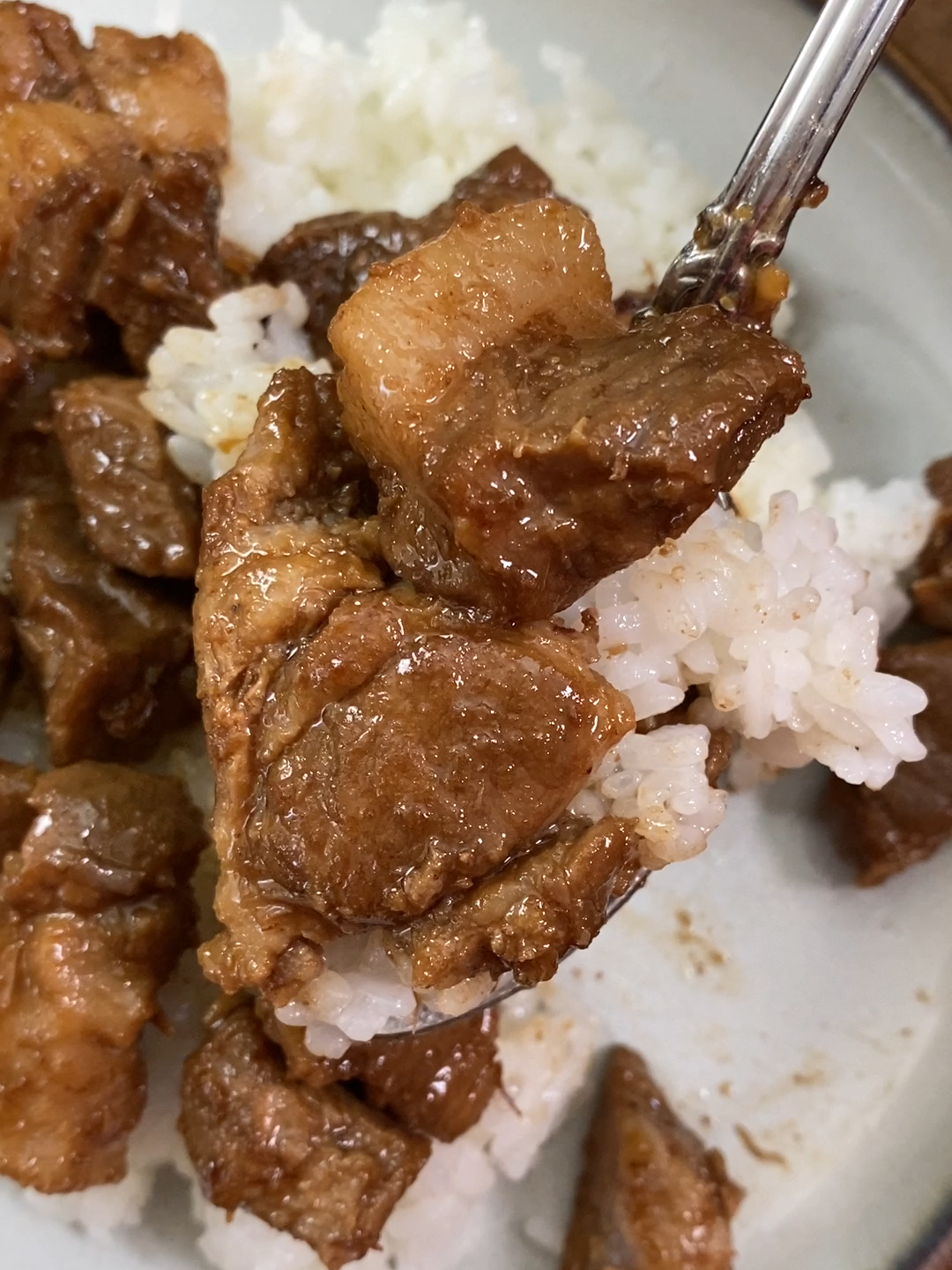
What Ingredients Do You Need for Pork Adobo
My pork adobo recipe has very few ingredients:
- pork shoulder or pork belly
- soy sauce
- vinegar of any type but fruit preferred
- black peppercorn
- garlic
- bay leaves
In addition, you’ll most likely want to eat rice with your adobo so don’t forget to start that in time!
Of course, you can substitute any protein for the pork. Chicken being one of the more popular substitutions. Other additions I like to toss in more often than not are quail eggs. I love the little bit of texture difference these give to the dish. You can find my chicken adobo recipe here.
Some adobo recipes might call for sugar. Feel free to add some if you want a sweet flavor but that is simply not my preference so I left it out of this one.
What Vinegar Should You Use In Pork Adobo
You can use any vinegar, even white distilled vinegar, in your adobo and it will turn out just fine BUT I recommend using a sweet vinegar. My standby is apple cider vinegar but get creative and adjust to your taste!
One of the best adobo dishes I ever made actually used a pineapple vinegar from a Korean brand. It was sweeter than any other vinegar I had used before and gave such a nice, bright flavor to the dish!
What Is the Right Soy Sauce to Vinegar Ratio?
I recommend 1:1 ratio soy sauce to vinegar with a few extra splashes of vinegar. My recipe calls for 1/2 cup soy sauce and 1/2 cup + 2 tablespoons of vinegar but I would recommend adjusting to your taste. Some people love a very sour adobo while others enjoy it more balanced
How to Make Super Tender Pork Adobo
The best way to ensure the pork in your adobo is tender is to leave it overnight! It is impossible to refrain from eating it immediately after cooking so make sure to make extra!
But seriously, my adobo always tastes better when its been sitting in the fridge overnight as the vinegar helps to break down some of the tougher bits of the protein. I find it to be more flavorful as well as more tender.
What to Do With Leftover Pork Adobo
If you want to elevate this recipe to a new level, after letting the adobo rest for 24 hours, Remove the meat from the (now gelatinized) adobo sauce and fry on medium heat. This will lock in the flavors and give the pork a nice fried texture. Then cook down the remaining adobo sauce and pour it over the fried pork and rice.
Process
Pork adobo is generally straight forward: brown the aromatics and protein then add the rest of the ingredients. Simmer for as long as you can wait and then serve with white rice (preferrably jasmine rice). Full recipe and ingredients list is below.
Prep your ingredients! Cube pork and smash garlic.
In a large pot, saute the pork and garlic together.
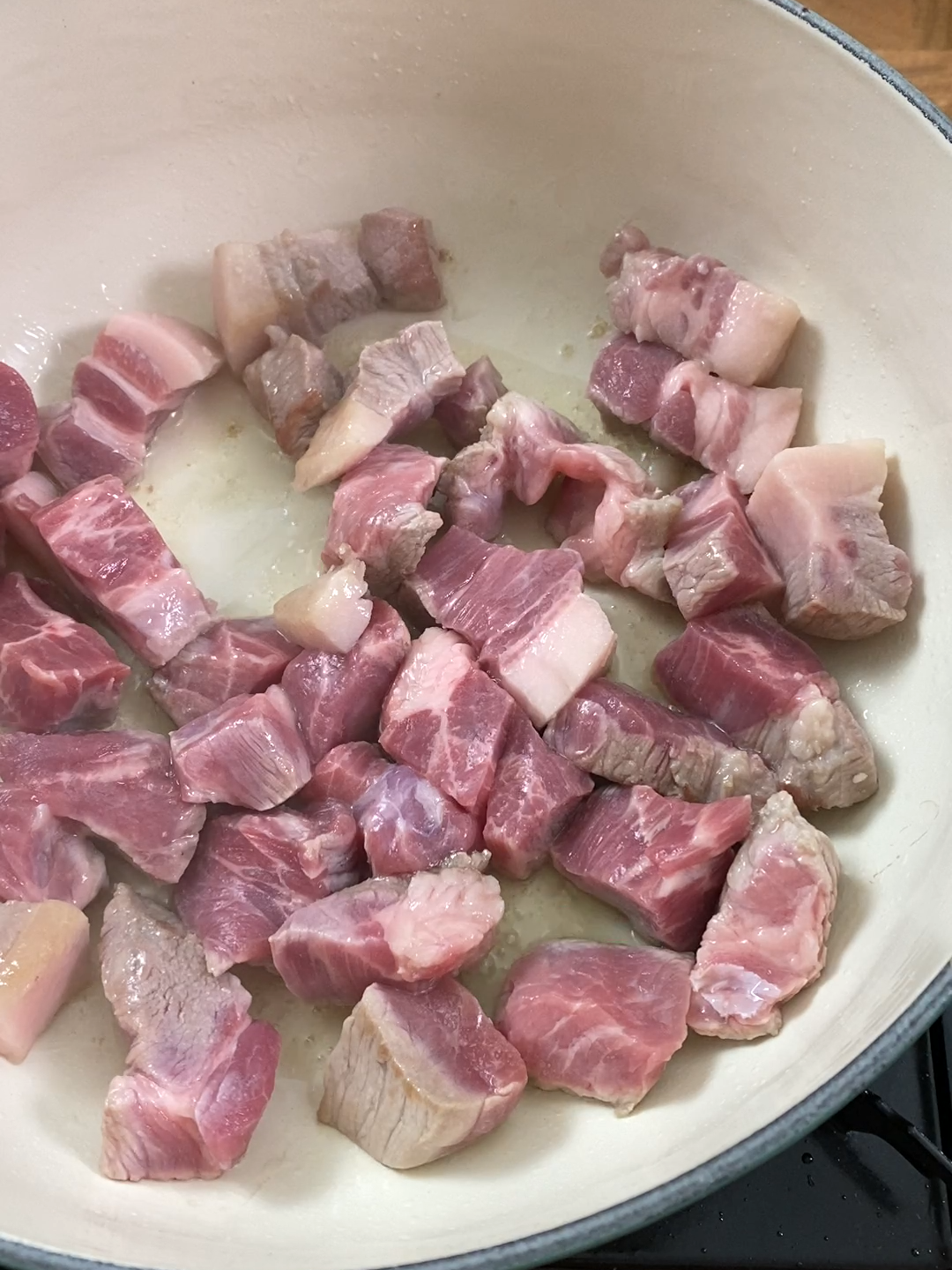
Add the rest of the ingredients and bring to a boil. Then turn down the heat to a simmer. Ideally you want to simmer for an hour but I’ve often started eating after just 15 minutes. Just remember the longer, the better!
It is advisable to let the adobo sit overnight to allow the meat to tenderize and full soak up all the flavor. If you absolutely can’t wait overnight, you can serve it now.

Serve with white rice and enjoy!
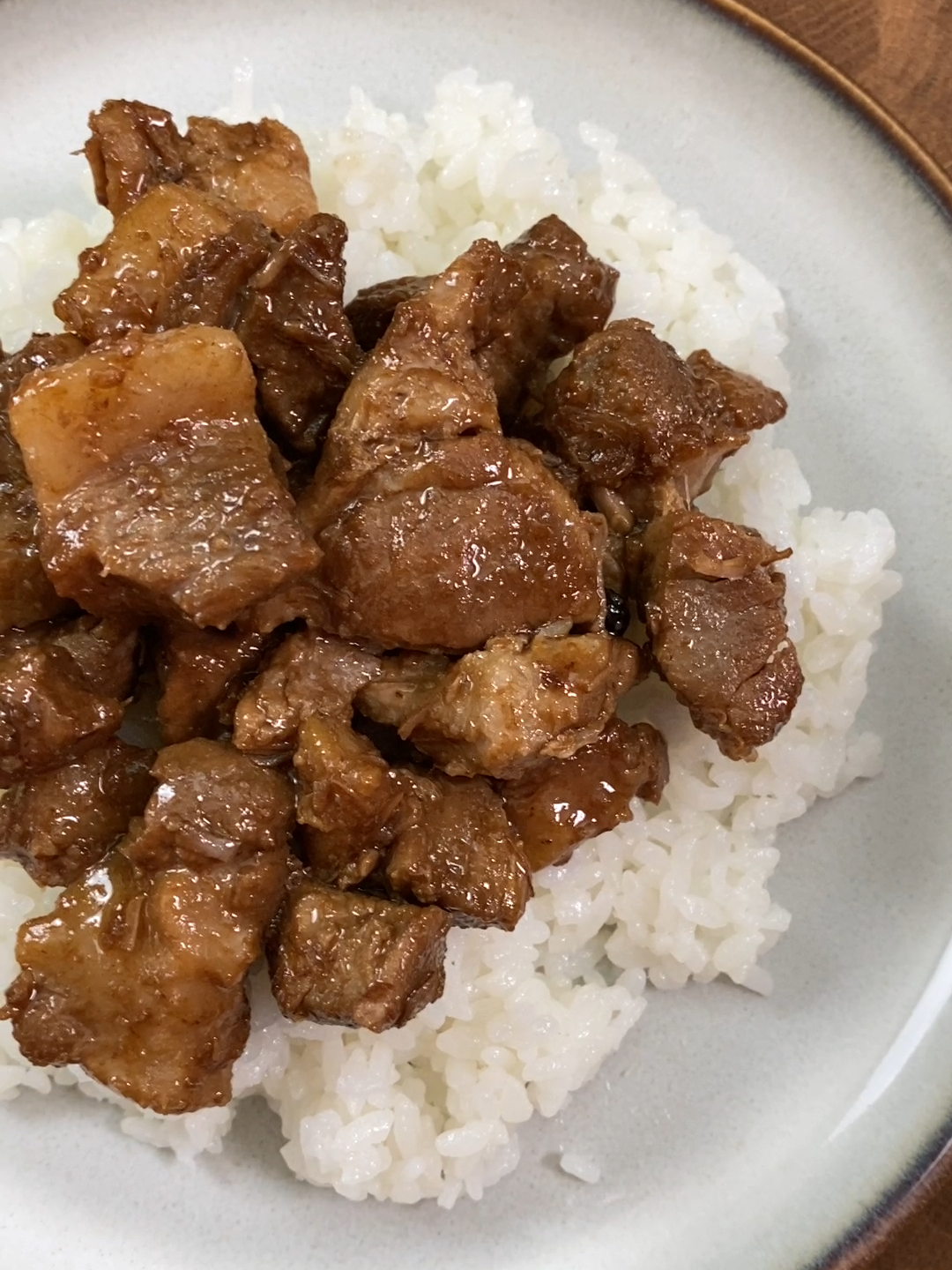
Recipe
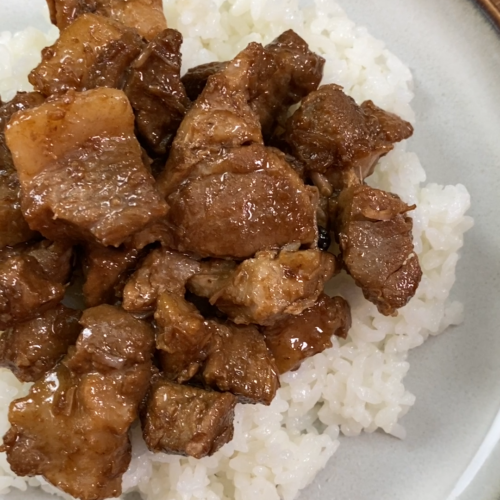
Filipino Pork Adobo
Ingredients
- 2 ½ pounds pork shoulder or pork belly
- ½ cup soy sauce
- ½ cup + 2 tablespoons apple cider vinegar
- 10 peppercorns
- 5 cloves garlic crushed
- 2 bay leaves
- rice to serve
- oil for browning the pork
Instructions
- Chop the pork into large cubes. Peel garlic and crush once with the flat side of a knife.
- In a large oiled and heated sauce pan, fry the cubes of pork. You probably will have to do this little by little to make sure the pork is evenly cooked. Remove any cubes of pork that are fully cooked. Do not clean your sauce pan. You want to keep all the flavorful goodness.
- To the sauce pan, add the crushed garlic, peppercorns, bay leaves, apple cider vinegar and soy sauce. Simmer over low heat for at least 1 hour stirring occasionally but not too often!
- It is advisable to let the adobo sit overnight to allow the meat to tenderize and full soak up all the flavor. If you absolutely can’t wait overnight, you can serve it now.
- If you’ve left it overnight, separate the meat from the gelatinous sauce and fry the meat over medium heat until the meat develops a nicely fried crust
- Cook down the adobo sauce so it thickens slightly. Pour this sauce over the fried pork and serve with rice. Enjoy!

